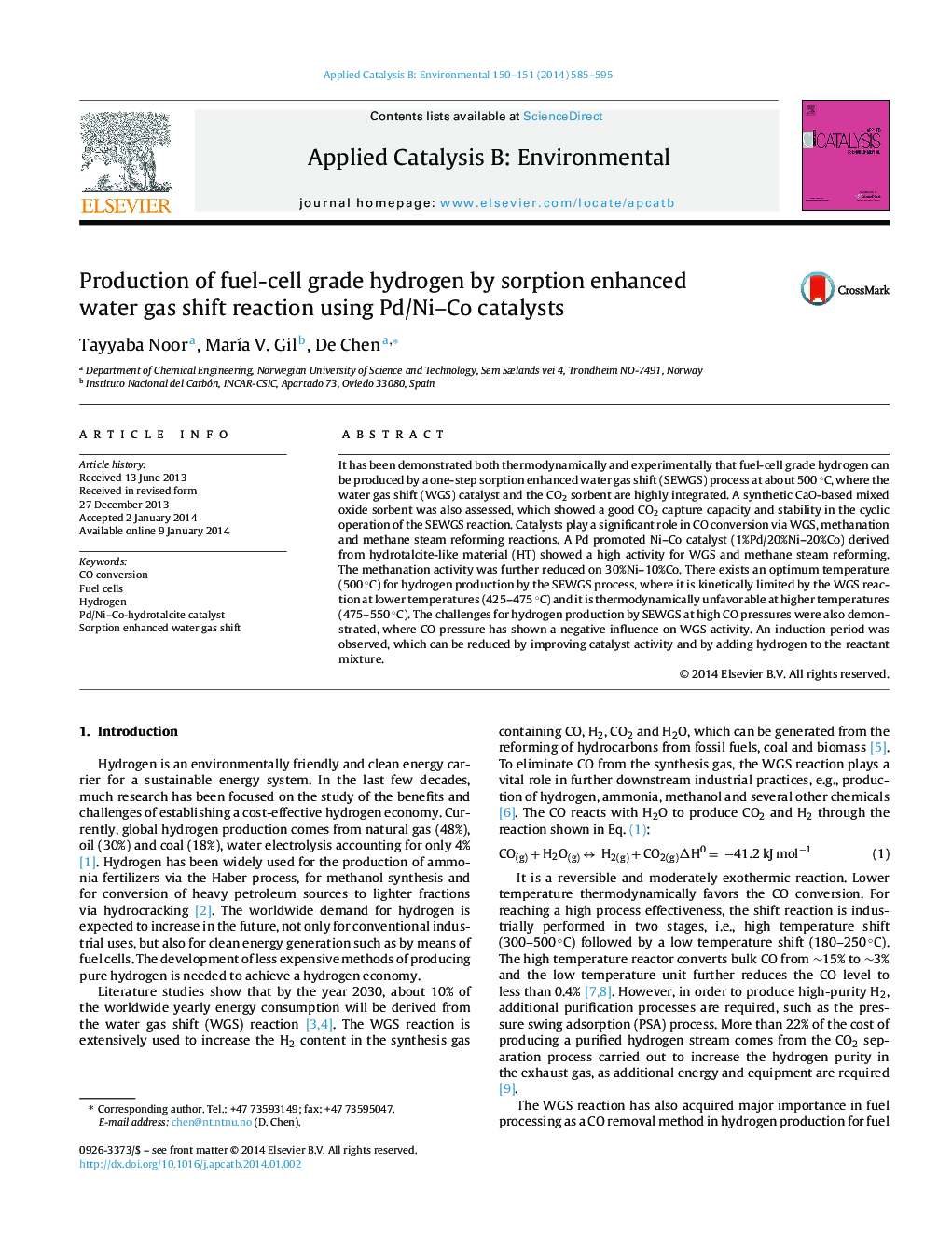| Article ID | Journal | Published Year | Pages | File Type |
|---|---|---|---|---|
| 45966 | Applied Catalysis B: Environmental | 2014 | 11 Pages |
•Pd/Ni–Co catalyst and CaO based sorbent have been studied for sorption enhanced water gas shift reaction.•Fuel cell grade hydrogen was achieved in one-step water gas shift reaction with in-situ CO2 capture.•Improved resistance to methanation reaction was found by using 30%Ni–10%Co catalyst.•CaCeZr mix oxide sorbent was evaluated for enhanced capture capacity and better stability than dolomite.
It has been demonstrated both thermodynamically and experimentally that fuel-cell grade hydrogen can be produced by a one-step sorption enhanced water gas shift (SEWGS) process at about 500 °C, where the water gas shift (WGS) catalyst and the CO2 sorbent are highly integrated. A synthetic CaO-based mixed oxide sorbent was also assessed, which showed a good CO2 capture capacity and stability in the cyclic operation of the SEWGS reaction. Catalysts play a significant role in CO conversion via WGS, methanation and methane steam reforming reactions. A Pd promoted Ni–Co catalyst (1%Pd/20%Ni–20%Co) derived from hydrotalcite-like material (HT) showed a high activity for WGS and methane steam reforming. The methanation activity was further reduced on 30%Ni–10%Co. There exists an optimum temperature (500 °C) for hydrogen production by the SEWGS process, where it is kinetically limited by the WGS reaction at lower temperatures (425–475 °C) and it is thermodynamically unfavorable at higher temperatures (475–550 °C). The challenges for hydrogen production by SEWGS at high CO pressures were also demonstrated, where CO pressure has shown a negative influence on WGS activity. An induction period was observed, which can be reduced by improving catalyst activity and by adding hydrogen to the reactant mixture.
Graphical abstractFigure optionsDownload full-size imageDownload as PowerPoint slide
